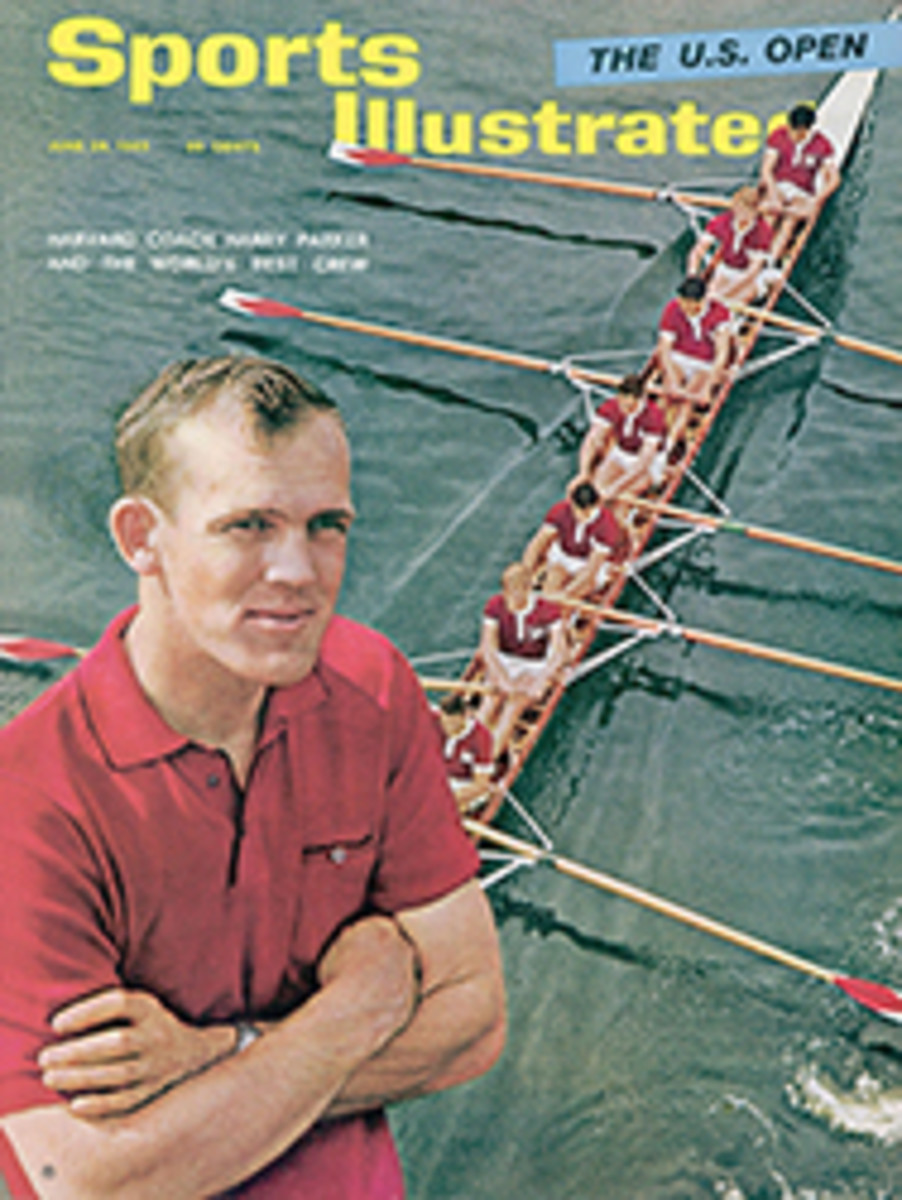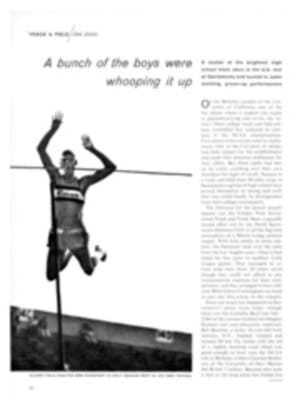
LETTER FROM THE PUBLISHER
Associate Editor Gwilym Brown, who this week tells the story of the unique resorts run by Laurance Rockefeller, is a Rockefeller chronicler of long standing. Way back in junior year at The Cambridge School of Weston, Mass., Brown was already writing a review which was, its title page declared, "an impartial and unemotional treatise on the biography of Standard Oil and John D. Rockefeller." Impartial reviewer Brown found God's Gold, a standard work by John Flynn, "full of rebate rates and stock holdings" but relieved by disclosures that John D.'s father was a patent-medicine salesman and that "Rockefeller always explained his monetary moves by saying that God wanted him to centralize a tremendous fortune and free the oil industry of wasteful competition." Junior Brown was so struck by the latter theme that he painstakingly drew on the title page of his report an open, appropriately Biblical-looking book. On the left-hand page he inscribed a quotation from the prophet Haggai: "The silver is mine and the gold is mine, saith the Lord of Hosts (Hag. 2:8)." On the right-hand page he put a quotation from John D. Rockefeller: "God gave me my money."
Brown, after recently traveling 15,000 miles in eight days to cover the immense scope of grandson Laurance Rockefeller's resort activities, now believes that God, in addition to giving John D. his money, also deeded over to Rockefeller and his heirs in perpetuity the whirlwind from which He once spoke to Job, one of His earlier wealthy servants. To keep up with the Rockefellers, Gwilym rode four jets, live charter planes, three motor launches, one jeep, seven taxis and live private cars to get from New York to Hawaii, to San Juan, to the British Virgin Islands, to St. John, to St. Croix. But Brown, who runs marathons in his spare time, is a pretty fair entry in the whirlwind league himself. Besides encompassing in one long week the domain of a Rockefeller who transplants groves of banyan trees and troves of 700-year-old art, Gwil found time to climb two mountains, swim in two oceans and two bays, and shoot a 43 for nine holes of golf at Dorado.
Still, there were difficulties, thorny in a manner more than merely metaphoric. Bob Hoke, Laurance's publicity man, warned Brown to bring something more than just a bathing suit when he came to Hawaii and Mauna Kea. "The sun is hot," he said, "and there are thorns sticking out of tree roots that will go right through the sole of an ordinary shoe." Forewarned was forearmed, or at least foreshod. Gwilym's first confrontation with Laurance was not at the Rockefeller ranch—known, intriguingly, as the White House—but on the site of the new Mauna Kea Beach Hotel. With trousers tucked into thick-soled orange leather desert boots and with a wide-brimmed straw hat clamped onto his head, Brown stumbled toward his subject. "I certainly didn't look like anything out of Sporting Look," he says, "but I figured Rockefeller at least had to give me points for preparedness."
Laurance's distaste for artificial air conditioning also presented some problems. Spending the night in one of Little Dix's stilted cabins, Brown, to get a good cross draft, opened up all the louvers provided by a louver-generous Rockefeller. "When I climbed out of bed the next morning," Gwilym remembers, "it was broad daylight, the louvers were wide open and there I was, on public display, scrambling to jump into the pajamas I had foresightedly left off the night before. I suddenly knew what it felt like to be one of those girls they hang in cages in Go-Go joints."
Brown, however, survived his embarrassment. The tale he lived to tell, a second impartial and unemotional treatise on Rockefeller enterprise, begins on page 68. The first one, incidentally, got a B plus.

